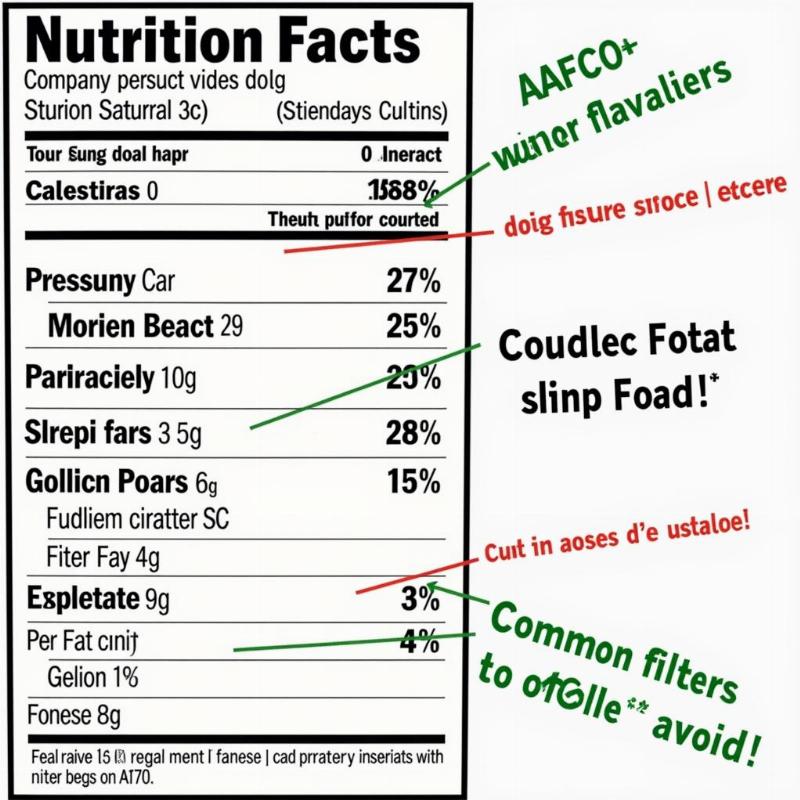Dave’s Dog House menu has become a popular search term among dog owners, likely indicating a desire for high-quality, readily available dog food options. While “Dave’s Dog House” doesn’t appear to be a nationally recognized brand, the search suggests a need for information on selecting the best food for your canine companion. This article will guide you through creating a balanced and nutritious “menu” for your dog, focusing on key nutritional needs, popular dog food brands available in the US, and tips for identifying the best choices for your furry friend.
Deciphering Dog Food Labels: Essential Nutrients for Canine Health
Understanding dog food labels is crucial for responsible pet ownership. Look for foods that meet the Association of American Feed Control Officials (AAFCO) standards, ensuring they provide complete and balanced nutrition. Key nutrients include protein (from meat sources like chicken, beef, or fish), healthy fats (for skin and coat health), carbohydrates (for energy), and essential vitamins and minerals. Avoid fillers like corn syrup and artificial colors.
 Analyzing Dog Food Labels
Analyzing Dog Food Labels
Popular Dog Food Brands in the US: Finding the Right Fit for Your Dog
The US market offers a wide array of dog food brands catering to various breeds, sizes, and dietary needs. Some popular choices include Purina Pro Plan, Hill’s Science Diet, and Royal Canin. These brands offer formulations for different life stages, from puppies to seniors, and address specific health concerns like allergies or joint issues. Always consult with your veterinarian to determine the best brand and formula for your dog’s individual requirements.
Creating a Balanced “Dave’s Dog House Menu”: Tailored Nutrition for Your Pup
While a specific “Dave’s Dog House” menu might not exist, you can create a customized feeding plan for your dog based on their breed, age, activity level, and any specific dietary needs. Consider incorporating a variety of protein sources, healthy fats, and complex carbohydrates. You can also supplement their diet with fresh fruits and vegetables, always ensuring they are safe for canine consumption.
Home-Cooked Meals for Dogs: A Wholesome Approach
Many dog owners are turning to home-cooked meals to provide their pets with fresh, whole-food nutrition. This allows for complete control over ingredients and caters to specific dietary restrictions. However, it’s crucial to consult a veterinary nutritionist to ensure the meals are balanced and meet all your dog’s nutritional requirements.
Ensuring Food Safety and Avoiding Common Mistakes
Always prioritize food safety when preparing your dog’s meals. Avoid feeding them cooked bones, grapes, raisins, onions, and chocolate, which can be toxic to dogs. Store dog food properly to prevent spoilage and bacterial growth. Monitor your dog’s weight and adjust their food intake as needed to maintain a healthy body condition.
Conclusion: Nourishing Your Canine Companion for a Long and Happy Life
Providing your dog with a balanced and nutritious diet is essential for their overall health and well-being. While “Dave’s Dog House menu” may not be a recognized brand, you can create a personalized “menu” for your dog by understanding their nutritional needs and selecting high-quality food options available in the US. Always consult your veterinarian for personalized guidance and recommendations tailored to your dog’s individual requirements. By following the advice in this article, you can ensure your furry friend enjoys a long, healthy, and happy life.
FAQ:
- What are the essential nutrients for a dog’s diet? Protein, healthy fats, carbohydrates, vitamins, and minerals are crucial for a dog’s health.
- How can I tell if a dog food brand is good quality? Look for AAFCO compliance, high-quality protein sources, and avoid fillers like corn syrup and artificial colors.
- Can I feed my dog home-cooked meals? Yes, but consult a veterinary nutritionist to ensure balanced nutrition.
- What foods are toxic to dogs? Cooked bones, grapes, raisins, onions, and chocolate are toxic and should be avoided.
- How much should I feed my dog? Consult your veterinarian for personalized recommendations based on your dog’s breed, age, and activity level.
- What are some signs of food allergies in dogs? Itching, skin irritation, gastrointestinal upset, and ear infections can be signs of food allergies.
- How often should I feed my dog? Most adult dogs thrive on being fed twice a day.
Beautdogs.us is your premier online destination for all things dog-related in the US. We provide expert advice on dog breeds, care, and product recommendations. Whether you’re a new dog owner or a seasoned pro, Beautdogs.us offers a wealth of trustworthy information. Contact us at [email protected] or +1 501-555-7529 for personalized guidance. Visit Beautdogs.us today!